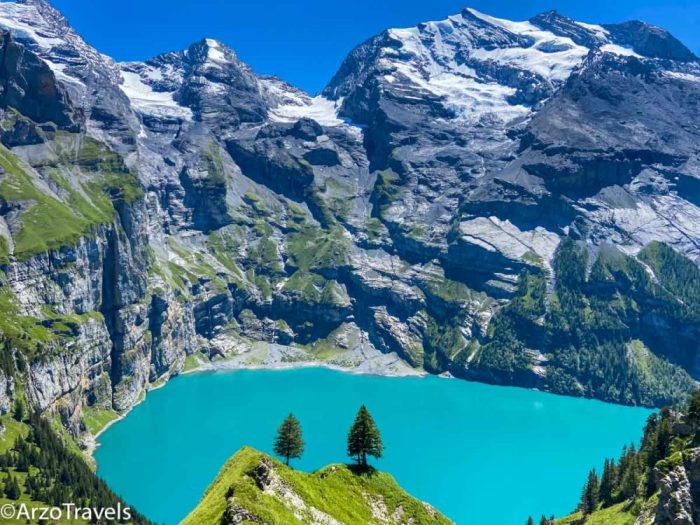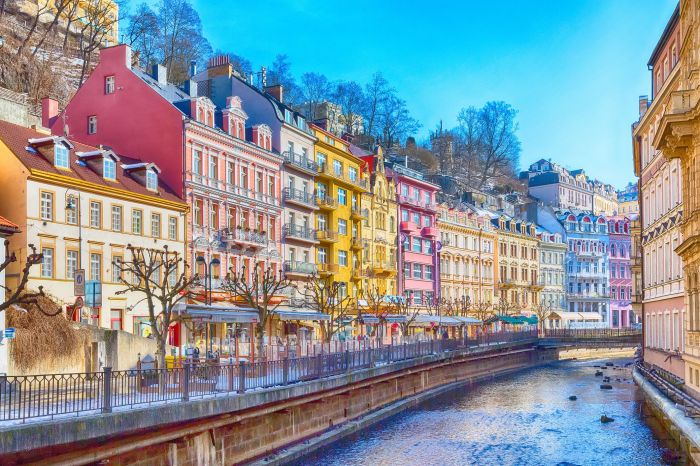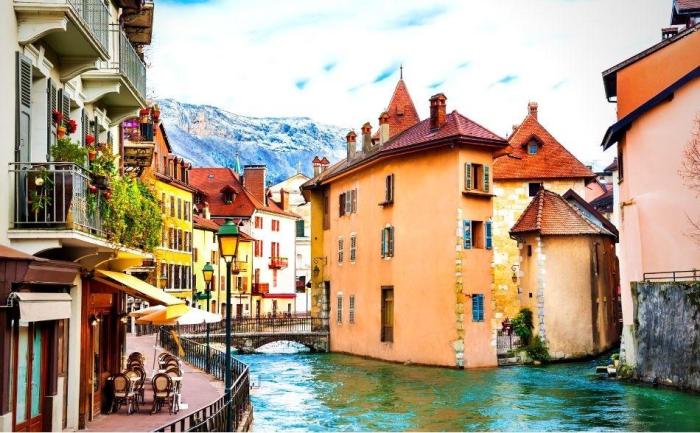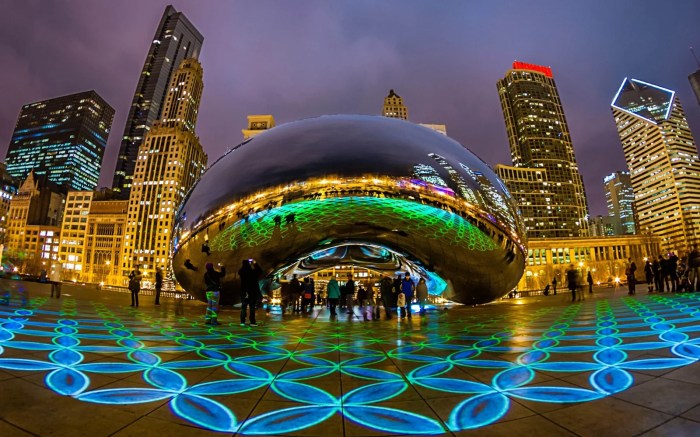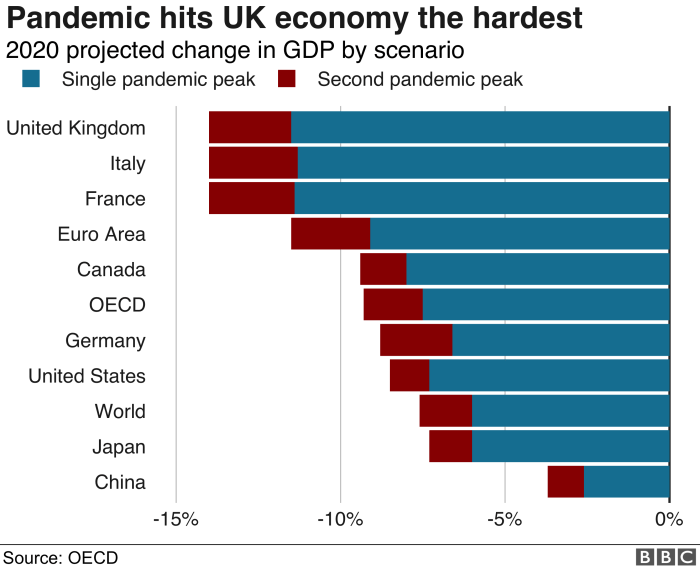Top 10 Places To Visit In Tuscany
Top 10 Places To Visit In Tuscany: Imagine rolling hills dotted with vineyards, charming medieval towns, and breathtaking art masterpieces. This is Tuscany, a region in central Italy that captivates the heart and soul with its rich history, vibrant culture, and exquisite beauty.
From the bustling streets of Florence to the tranquil countryside, Tuscany offers an unforgettable experience for every traveler.
Tuscany is a region that seamlessly blends ancient history with modern charm. Picture yourself strolling through the cobblestone streets of Siena, marveling at the Duomo’s intricate architecture, or savoring a traditional Tuscan meal under the warm Italian sun. Tuscany is a place where time seems to slow down, allowing you to fully immerse yourself in the local culture and appreciate the simple pleasures of life.
Introduction
Tuscany, a region in central Italy, is a captivating destination that enchants visitors with its breathtaking landscapes, rich history, and vibrant culture. From rolling hills dotted with vineyards to charming medieval towns and Renaissance masterpieces, Tuscany offers a unique blend of natural beauty and artistic heritage.
Imagine yourself strolling through the cobblestone streets of Siena during the Palio, an ancient horse race that ignites the city with passion and tradition. The air is filled with the sound of drums and the cheers of the crowd as the horses thunder through the Piazza del Campo, a magnificent shell-shaped square.
This is just a glimpse of the magic that awaits you in Tuscany.Tuscany’s history dates back to ancient times, with Etruscan settlements, Roman ruins, and medieval castles that stand as testaments to its rich past. The region played a pivotal role in the Renaissance, giving birth to artistic giants like Leonardo da Vinci, Michelangelo, and Raphael.
Today, Tuscany’s cultural legacy is evident in its world-renowned museums, art galleries, and architectural wonders.
Florence: The Cradle of Renaissance
Florence, a city nestled in the heart of Tuscany, is a captivating blend of history, art, and culture. It’s a city that whispers tales of the Renaissance, a period that saw a remarkable rebirth of art, science, and literature, leaving an indelible mark on Western civilization.
Florence, the birthplace of this glorious era, is a living museum, where every corner echoes with the echoes of artistic genius and historical significance.
Iconic Landmarks
Florence is renowned for its iconic landmarks, each a testament to the city’s rich history and artistic heritage.
Tuscany is all about rolling hills, charming villages, and delicious food, but if you’re looking for something a little different, check out the Top 10 Places On The Aeolian Islands. These volcanic islands off the coast of Sicily offer a totally unique experience with stunning beaches, active volcanoes, and charming towns.
But, if you’re a history buff, you’ll definitely want to spend some time in Tuscany, exploring the ancient ruins and Renaissance art.
- The Duomo: This majestic cathedral, with its iconic dome designed by Filippo Brunelleschi, is a symbol of Florence. It’s a masterpiece of Renaissance architecture, a testament to the ingenuity of its builders, and offers breathtaking views of the city from its summit.
- Ponte Vecchio: This medieval bridge, unique for its shops built along its sides, is a charming and picturesque sight. Unlike most bridges, it was spared destruction during World War II, preserving its historic charm. The shops, originally inhabited by butchers, now house jewelers and artisans, adding to its vibrant character.
- Uffizi Gallery: Housing an extraordinary collection of Renaissance art, the Uffizi Gallery is a must-visit for any art enthusiast. From Leonardo da Vinci’s “Annunciation” to Michelangelo’s “Doni Tondo,” the gallery showcases masterpieces that defined the Renaissance era. The gallery’s architecture itself is a work of art, with its grand halls and stunning views of the Arno River.
The Medici Family: Patrons of the Arts, Top 10 Places To Visit In Tuscany
The Medici family played a pivotal role in shaping Florence’s destiny. They were wealthy bankers and powerful patrons of the arts, fostering a golden age of creativity. Their influence extended far beyond Florence, shaping the course of European history.
“The Medici were not just patrons of the arts, but active participants in the creative process, commissioning works, funding artists, and even engaging in art themselves.”
The Medici family’s legacy is evident in the city’s museums, palaces, and gardens. The Palazzo Pitti, once the Medici family’s grand residence, is now home to several museums, including the Gallery of Modern Art and the Costume and Fashion Institute.
The Boboli Gardens, behind the Palazzo Pitti, were designed by the Medici and showcase the Renaissance ideal of a harmonious blend of nature and art.
Museums and Art Galleries
Florence is a treasure trove of museums and art galleries, each offering a unique glimpse into the city’s artistic heritage.
- The Galleria dell’Accademia: This museum houses Michelangelo’s iconic “David,” a masterpiece of Renaissance sculpture. The gallery also showcases a collection of Florentine paintings, primarily from the 13th to 16th centuries.
- The Bargello: This former prison is now home to a remarkable collection of sculptures, including works by Donatello, Michelangelo, and Cellini. The museum also showcases a collection of ceramics and decorative arts.
- The Palazzo Vecchio: This grand palace, once the seat of Florentine government, is now home to a collection of paintings and sculptures, including works by Leonardo da Vinci, Michelangelo, and Raphael. The palace’s impressive architecture and stunning frescoes offer a glimpse into the grandeur of Renaissance Florence.
Siena
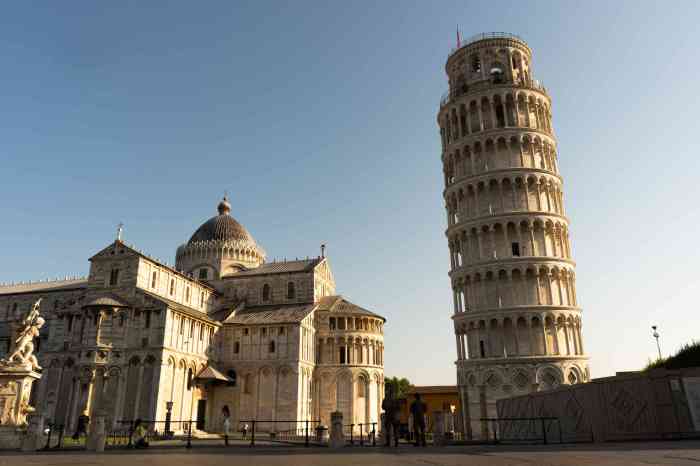
Siena, a medieval gem nestled in the heart of Tuscany, is a city steeped in history, art, and a unique spirit of rivalry. It’s known for its stunning architecture, captivating history, and, most famously, the Palio, a thrilling horse race that ignites the city’s passion.
The Palio: A Legacy of Rivalry
The Palio, a bareback horse race held twice a year in the Piazza del Campo, is more than just a sporting event; it’s a cultural phenomenon that embodies the city’s spirit and history. The race dates back to the 13th century, and its origins are intertwined with the long-standing rivalry between Siena and Florence.
These two powerful city-states, vying for dominance in the region, clashed in numerous battles and political conflicts. The Palio, in a way, represents a continuation of this rivalry, albeit in a more symbolic and festive form.The race involves ten contrade, or districts, each with its own unique identity, colors, and patron saint.
The contrade are fiercely competitive, and their rivalry extends beyond the Palio, permeating the daily life of the city. The Palio is a grand spectacle, attracting thousands of visitors from around the world. It’s a celebration of tradition, a vibrant display of Sienese culture, and a testament to the enduring spirit of the city.
Tuscany’s Rolling Hills and Vineyards
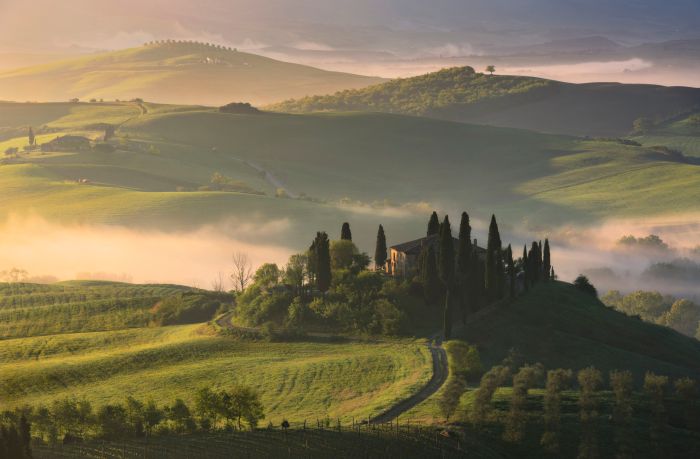
Imagine rolling hills blanketed in vibrant green vineyards, punctuated by ancient cypress trees, and dotted with charming medieval towns. This is the iconic landscape of Tuscany, a region that has captivated artists, writers, and travelers for centuries.
Tuscany’s rolling hills and charming towns are a dream for any traveler, but if you’re looking for a more adventurous escape, consider checking out Top 10 Places To Visit in Iceland. Iceland’s glaciers, volcanoes, and geysers are totally different from anything you’ll find in Italy, but both destinations offer stunning natural beauty and unique cultural experiences.
Back in Tuscany, you can wander through vineyards, savor delicious food, and soak up the sun in some of the world’s most beautiful cities.
Tuscany’s Wine Regions
Tuscany’s rich soil and Mediterranean climate create the perfect conditions for growing grapes, making it one of Italy’s most renowned wine-producing regions. Here’s a look at some of Tuscany’s most famous wine regions and their signature wines:
| Region | Signature Wine | Description |
|---|---|---|
| Chianti Classico | Chianti Classico DOCG | A blend of Sangiovese grapes, known for its ruby red color, fruity aromas, and dry, balanced flavor. |
| Brunello di Montalcino | Brunello di Montalcino DOCG | Made entirely from Sangiovese grapes, this wine is characterized by its intense color, complex aromas, and long aging potential. |
| Vino Nobile di Montepulciano | Vino Nobile di Montepulciano DOCG | A full-bodied red wine made from Sangiovese grapes, known for its rich, earthy flavors and long aging potential. |
| Super Tuscans | Various | A category of wines produced outside the traditional DOCG regulations, often made with international grape varieties like Cabernet Sauvignon and Merlot, and known for their high quality and unique character. |
The Tuscan Countryside
Beyond the vineyards, Tuscany’s countryside offers a captivating tapestry of natural beauty. Olive groves, cypress trees, rolling hills, and charming villages create a sense of tranquility and timelessness. The region’s natural beauty is best experienced on a leisurely drive, a hike through the countryside, or a bike ride along scenic routes.
The air is fresh and fragrant with the scent of wildflowers, while the sounds of nature create a soothing symphony.
The Tuscan Coast: Top 10 Places To Visit In Tuscany
Tuscany’s coastline is a captivating blend of sun-drenched beaches, charming coastal towns, and picturesque islands. Whether you’re seeking relaxation on sandy shores, exploring charming villages, or indulging in fresh seafood, the Tuscan coast offers an unforgettable experience.
Coastal Towns and Villages
The Tuscan coastline is dotted with charming towns and villages that offer a glimpse into the region’s rich history and culture.
- Versilia: Located north of Pisa, Versilia is known for its elegant seaside resorts, vibrant nightlife, and stunning beaches. The region is also home to numerous art galleries and museums, reflecting the artistic heritage of Tuscany.
- Maremma: This region stretches south of Pisa and offers a wilder, more rugged coastline. The Maremma is characterized by its vast stretches of unspoiled beaches, rolling hills, and dense pine forests. Explore the historic towns of Orbetello and Porto Santo Stefano, and discover the beauty of the Maremma Natural Park.
- Cinque Terre: While technically part of Liguria, the Cinque Terre is often considered part of the Tuscan coast due to its proximity and shared cultural heritage. This breathtaking region is renowned for its five colorful villages perched on steep cliffs overlooking the Mediterranean Sea.
These villages, Manarola, Corniglia, Vernazza, Monterosso al Mare, and Riomaggiore, are connected by scenic hiking trails and offer stunning views of the turquoise waters.
Beaches and Coves
The Tuscan coast boasts a variety of beaches, from sandy stretches to secluded coves.
- Versilia Beaches: Versilia is known for its long, sandy beaches, ideal for sunbathing, swimming, and water sports. Popular beaches include Viareggio, Forte dei Marmi, and Marina di Pietrasanta.
- Maremma Beaches: The Maremma offers a more wild and unspoiled beach experience. Explore the secluded coves and pristine beaches of the Maremma Natural Park, such as the Spiaggia della Feniglia and the Spiaggia di Talamone.
- Island Beaches: The Tuscan Archipelago, located off the coast of Tuscany, is home to seven islands, each with its unique charm. The most famous is Elba, known for its stunning beaches, crystal-clear waters, and Napoleon’s exile. Other islands include Giglio, Capraia, and Montecristo, offering a secluded and tranquil escape.
Tuscan Coastal Cuisine
The Tuscan coast offers a culinary experience that celebrates the bounty of the sea.
- Fresh Seafood: From grilled fish to flavorful seafood pasta dishes, the Tuscan coast offers a wide array of fresh seafood options. Try the local specialties of “cacciucco” (a hearty fish stew) and “spaghetti alle vongole” (spaghetti with clams).
- Local Specialties: In addition to seafood, the Tuscan coast offers a range of local specialties, including “ribollita” (a hearty bread soup), “panzanella” (a salad with bread, tomatoes, and onions), and “sbrisolona” (a crumbly almond cake).
The Art of Tuscan Cuisine
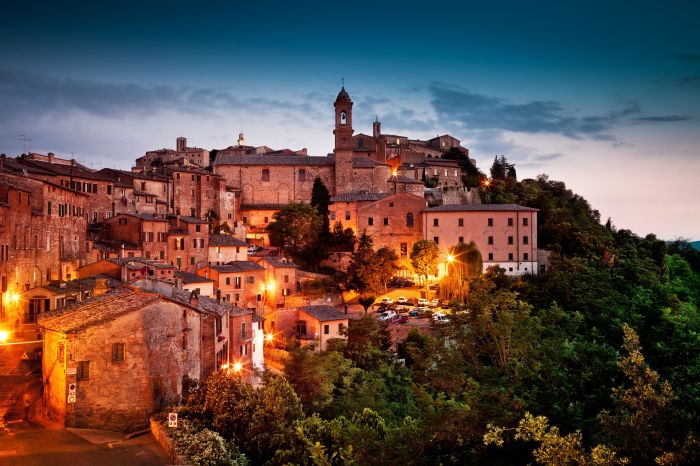
Tuscany is renowned not only for its stunning landscapes and rich history but also for its delectable cuisine. Tuscan food is a symphony of fresh, local ingredients, simple preparations, and time-honored traditions. It’s a culinary experience that celebrates the bounty of the region and embodies the true essence of Italian gastronomy.
The Essence of Tuscan Flavors
The foundation of Tuscan cuisine lies in the use of fresh, seasonal ingredients sourced from the surrounding countryside. From the fertile valleys to the sun-drenched hillsides, Tuscany offers an abundance of produce, meats, and cheeses that are integral to its culinary identity.
“The Tuscan kitchen is a reflection of the land,” says renowned chef Antonio Carluccio. “It’s about using simple ingredients, cooked simply, and allowing the flavors to shine through.”
This emphasis on quality and freshness is evident in every dish, from the hearty stews and flavorful pasta sauces to the succulent grilled meats and delicate desserts.
Traditional Tuscan Dishes
Tuscan cuisine boasts a repertoire of classic dishes that have been passed down through generations. Here are some of the most celebrated:
Florentine Steak
Florentine steak, or bistecca alla fiorentina, is a culinary masterpiece. It’s a thick-cut, T-bone steak from the Chianina breed of cattle, known for its lean, flavorful meat. The steak is grilled over charcoal, creating a crusty exterior and a juicy, tender interior.
It’s typically served rare, seasoned only with salt and pepper, allowing the natural flavors of the meat to shine through.
Pasta alla Carbonara
While often associated with Rome, pasta alla carbonara is also a popular dish in Tuscany. It’s a simple yet decadent pasta dish made with spaghetti, pancetta (cured pork belly), eggs, and pecorino romano cheese. The creamy sauce is created by whisking the eggs with the cheese and pancetta fat, creating a rich and flavorful coating for the pasta.
Ribollita
Ribollita is a hearty Tuscan soup made with bread, vegetables, and beans. It’s a classic example of peasant food, utilizing leftover bread and simple ingredients to create a nourishing and flavorful meal. The soup is traditionally cooked in a large pot and served with a drizzle of olive oil and a sprinkle of grated Parmesan cheese.
Renowned Restaurants and Food Markets
Tuscany is home to numerous acclaimed restaurants and vibrant food markets, offering a glimpse into the region’s culinary heart.
| Restaurant | Location | Speciality |
|---|---|---|
| Osteria Le Logge | Florence | Traditional Tuscan cuisine, particularly Florentine steak |
| Trattoria Mario | Rome | Authentic Roman dishes, including pasta alla carbonara |
| La Buchetta Food & Wine | Siena | Tuscan specialties, with a focus on regional wines |
| Food Market | Location | Highlights |
|---|---|---|
| Mercato Centrale | Florence | A vast food hall with stalls offering fresh produce, meats, cheeses, and prepared dishes |
| Mercato di San Lorenzo | Florence | A bustling market with a focus on leather goods, souvenirs, and street food |
| Mercato di Sant’Ambrogio | Florence | A charming market specializing in local produce, cheeses, and cured meats |
The Charm of Tuscan Towns
Tuscany’s allure extends beyond its iconic cities, encompassing a network of captivating towns that whisper tales of history, art, and local charm. These towns, often overlooked in favor of their more famous counterparts, offer a glimpse into the soul of Tuscany, where time seems to move at a slower pace.
Pisa: Beyond the Leaning Tower
Pisa, known worldwide for its iconic Leaning Tower, is a city steeped in history and architectural grandeur. The Piazza dei Miracoli, home to the Leaning Tower, Pisa Cathedral, and the Baptistery, is a UNESCO World Heritage Site and a testament to the city’s architectural prowess.
Tuscany is a total vibe, with its rolling hills, charming towns, and delicious food. If you’re looking for something a little different, you might want to check out Top 10 Places In The Czech Republic , which has a totally different vibe but is still super cool.
After exploring the Czech Republic, you’ll be back in Tuscany in no time, ready to soak up the Italian sun and maybe even try some pasta making classes.
The Cathedral, a stunning example of Romanesque architecture, boasts a magnificent facade adorned with intricate sculptures and a breathtaking interior. The Baptistery, a circular structure with a unique acoustic effect, offers a glimpse into Pisa’s rich artistic heritage. Beyond the Piazza, Pisa offers a charming historic center with narrow cobblestone streets lined with medieval buildings, inviting visitors to explore its hidden gems.
Lucca: The City of Walls
Lucca, nestled amidst rolling hills, is a town enclosed by an intact Renaissance-era wall that offers breathtaking views of the surrounding countryside. The city’s historic center is a pedestrian paradise, where visitors can stroll along charming streets, discover hidden squares, and admire the city’s rich architectural heritage.
The Piazza dell’Anfiteatro, built on the site of a Roman amphitheater, is a unique and lively square surrounded by shops and cafes. The city’s most prominent landmark, the Guinigi Tower, boasts a unique feature: a rooftop garden adorned with trees, offering panoramic views of the city.
Lucca is also known for its vibrant musical heritage, hosting the Lucca Summer Festival, a renowned music event that attracts international artists.
San Gimignano: A Medieval Masterpiece
San Gimignano, perched atop a hilltop, is a medieval marvel that transports visitors back in time. The town is famous for its 14 remaining medieval towers, once a symbol of power and wealth for the city’s noble families. These towers, reaching towards the sky, create a unique and unforgettable skyline.
San Gimignano’s historic center, a UNESCO World Heritage Site, is a labyrinth of cobblestone streets lined with medieval buildings, charming shops, and traditional restaurants. The town’s main square, Piazza della Cisterna, is home to the well-preserved 13th-century Cisterna, a well that provided water to the town.
San Gimignano is also known for its production of Vernaccia di San Gimignano, a dry white wine that is a true symbol of the town.
| Town | Main Landmarks | Cultural Events |
|---|---|---|
| Pisa | Leaning Tower, Pisa Cathedral, Baptistery, Piazza dei Miracoli | Lucca Summer Festival, Pisa Jazz Festival, Pisa Marathon |
| Lucca | Guinigi Tower, Piazza dell’Anfiteatro, Lucca Walls, Cathedral of San Martino | Lucca Summer Festival, Lucca Comics & Games, Lucca Film Festival |
| San Gimignano | Medieval Towers, Piazza della Cisterna, Collegiata di San Gimignano, Palazzo Comunale | Vernaccia di San Gimignano Wine Festival, San Gimignano Medieval Festival, San Gimignano Jazz Festival |
The Tuscan Lifestyle
Tuscany’s allure goes beyond its stunning landscapes and artistic treasures. It’s the relaxed and authentic lifestyle of its people that truly captures the heart. The Tuscan way of life is a harmonious blend of tradition, family, and a deep appreciation for the simple pleasures.
Experiencing the Tuscan Lifestyle
The Tuscan lifestyle is about embracing the simple things in life, like enjoying a leisurely meal with family and friends, taking a stroll through a charming town square, or savoring a glass of local wine while watching the sunset over the rolling hills.
Here are some ways to experience this unique way of life:
- Visit local markets:Immerse yourself in the vibrant atmosphere of local markets, where you can find fresh produce, artisanal cheeses, and handcrafted goods. These markets are not just places to shop but also social hubs where locals gather to chat, catch up, and enjoy the day.
- Attend festivals and events:Tuscany is alive with festivals and events throughout the year, celebrating everything from food and wine to art and music. These events offer a glimpse into the local culture and traditions, and a chance to connect with the people.
- Enjoy a leisurely meal at a trattoria:Take your time to savor a traditional Tuscan meal at a local trattoria. The food is simple, fresh, and flavorful, and the atmosphere is warm and inviting.
- Go for a walk in nature:Tuscany’s rolling hills, vineyards, and olive groves offer endless opportunities for hiking, biking, and simply enjoying the beauty of nature.
- Learn a few Italian phrases:While English is widely spoken in tourist areas, learning a few basic Italian phrases will enhance your experience and show respect for the local culture.
Planning Your Tuscan Adventure
Planning a trip to Tuscany is an exciting journey, and with a little preparation, you can create an unforgettable experience. Whether you’re a seasoned traveler or a first-time visitor, understanding the logistics of getting around, finding the perfect accommodation, and budgeting for your trip will ensure a smooth and enjoyable adventure.
Transportation in Tuscany
Tuscany offers a variety of transportation options, allowing you to explore the region at your own pace.
- Driving:Renting a car provides the ultimate flexibility to explore Tuscany’s hidden gems and winding roads. However, driving in Tuscany can be challenging due to narrow roads and limited parking in some areas.
- Trains:Italy’s train network is efficient and reliable, making it an excellent option for traveling between major cities like Florence, Siena, and Pisa.
- Buses:Buses are a cost-effective way to travel within Tuscany, especially for reaching smaller towns and villages.
Accommodation in Tuscany
Tuscany offers a wide range of accommodation options to suit every budget and preference.
- Charming Villas:Immerse yourself in the Tuscan lifestyle by renting a villa, offering privacy, space, and often stunning views.
- Boutique Hotels:Experience the charm and elegance of Tuscany by staying in a boutique hotel, known for their unique character and personalized service.
- Agriturismos:Enjoy the authentic flavors of Tuscany by staying in an agriturismo, a working farm offering accommodations and delicious home-cooked meals.
Budgeting for Your Tuscan Adventure
Planning your budget is crucial for a successful trip.
- Accommodation:Accommodation costs vary depending on the type of lodging and the time of year. Expect to pay more for luxury villas and hotels, especially during peak season.
- Food:Tuscany is a culinary paradise, and indulging in its delicious cuisine can be a significant expense. Factor in the cost of meals, snacks, and local wines.
- Transportation:Transportation costs can add up, especially if you plan to rent a car. Consider using public transportation for some journeys to save money.
- Activities:Tuscany offers a wide range of activities, from visiting museums and wineries to hiking and biking. Allocate a budget for these experiences.
Best Time to Visit Tuscany
The best time to visit Tuscany depends on your preferences for weather and crowds.
- Spring (April-May):Enjoy mild weather and blooming wildflowers, but expect some crowds as tourism starts to pick up.
- Summer (June-August):Experience warm weather and long days, but prepare for hot temperatures and high tourist numbers.
- Autumn (September-October):Witness stunning fall foliage and enjoy pleasant temperatures, but expect fewer daylight hours.
- Winter (November-March):Experience Tuscany’s quieter side with fewer crowds and lower prices, but be prepared for cooler weather and possible rain.
Beyond the Tourist Trail
Tuscany is renowned for its iconic cities, rolling hills, and world-class cuisine. However, venturing beyond the well-trodden tourist path reveals a hidden world of authentic experiences and lesser-known gems. Exploring the less-traveled paths offers a chance to connect with the true heart of Tuscany, discovering hidden treasures and immersing yourself in the region’s unique culture.
Exploring Tuscan Villages
Discover the charm of Tuscany’s hidden villages, where time seems to stand still. These picturesque settlements, often perched on hilltops or nestled in valleys, offer a glimpse into the region’s rich history and traditions.
- Monteriggioni:A perfectly preserved medieval walled town, Monteriggioni offers a step back in time. Walk along the ramparts, explore the charming cobblestone streets, and soak in the breathtaking views of the surrounding countryside.
- San Quirico d’Orcia:This enchanting village is a jewel of the Val d’Orcia, renowned for its Renaissance architecture and picturesque gardens. Wander through the historic center, admire the Collegiate Church, and explore the Horti Leonini, a tranquil garden with stunning views.
- Pienza:Known as the “ideal city” of the Renaissance, Pienza boasts stunning architecture, including the magnificent Cathedral and the Piazza Pio II, a masterpiece of urban planning. Explore the charming shops, savor local delicacies, and enjoy the panoramic views from the surrounding hills.
Unveiling Tuscan Craftsmanship
Tuscany has a long tradition of artisanal craftsmanship, passed down through generations. Immerse yourself in this heritage by visiting local workshops and witnessing the creation of exquisite handcrafted goods.
- Leather workshops in Florence:Florence is renowned for its leather goods. Visit workshops in the Oltrarno district to witness the skilled artisans crafting beautiful bags, belts, and jackets using traditional techniques.
- Ceramic studios in Impruneta:This charming village is famous for its terracotta pottery. Explore the studios and witness the creation of stunning ceramics, from traditional cookware to decorative pieces.
- Glassblowing in Murano:While technically located in Venice, Murano is just a short ferry ride from the mainland. Witness the art of glassblowing, a tradition dating back centuries. Observe skilled artisans transforming molten glass into intricate sculptures and delicate ornaments.
Discovering Local Flavors
Tuscany is a culinary paradise, offering a wealth of regional specialties and traditional dishes. Delve into the heart of Tuscan cuisine by attending cooking classes or visiting local markets.
- Cooking classes in Florence:Immerse yourself in the art of Tuscan cooking by attending a hands-on class. Learn to prepare classic dishes like pasta alla Bolognese, Florentine steak, and tiramisu.
- Local markets in Siena:Experience the vibrant atmosphere of a Tuscan market. Explore the stalls filled with fresh produce, artisanal cheeses, cured meats, and local wines.
- Wine tasting in Chianti:Embark on a wine tour through the Chianti region, renowned for its world-class wines. Visit vineyards, sample different varieties, and learn about the winemaking process.
Ending Remarks
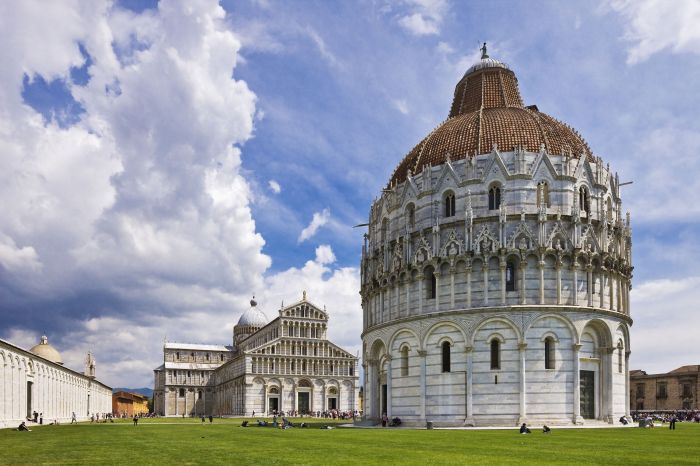
Whether you’re an art enthusiast, a history buff, a foodie, or simply seeking a relaxing escape, Tuscany has something to offer everyone. From the iconic landmarks of Florence to the hidden gems tucked away in the countryside, there’s a reason why Tuscany is consistently ranked as one of the most popular tourist destinations in the world.
So, pack your bags, grab your camera, and prepare to be enchanted by the magic of Tuscany.
FAQs
What is the best time to visit Tuscany?
The best time to visit Tuscany depends on your preferences. Spring (April-May) and autumn (September-October) offer pleasant weather and fewer crowds. Summer (June-August) is hot and crowded, but ideal for beach lovers.
How much does it cost to travel to Tuscany?
The cost of a trip to Tuscany varies depending on your travel style and budget. Expect to spend around $100-$200 per day for accommodation, food, and activities.
What are some must-try Tuscan dishes?
Some must-try Tuscan dishes include Florentine steak, pasta alla carbonara, ribollita, and lampredotto. Don’t forget to try the local wines, such as Chianti and Brunello di Montalcino.
What are some hidden gems in Tuscany?
Some hidden gems in Tuscany include the town of Volterra, the Etruscan necropolis of Tarquinia, and the island of Giglio. These destinations offer a glimpse into Tuscany’s lesser-known attractions and provide a more authentic experience.


